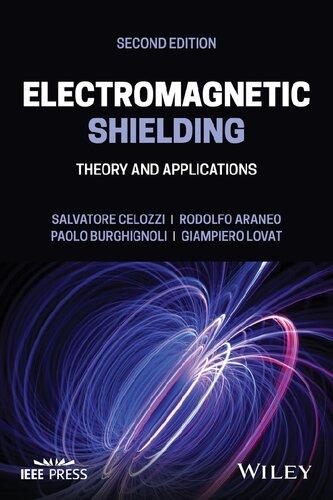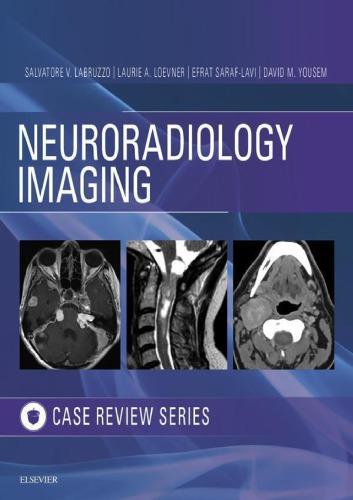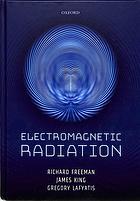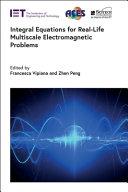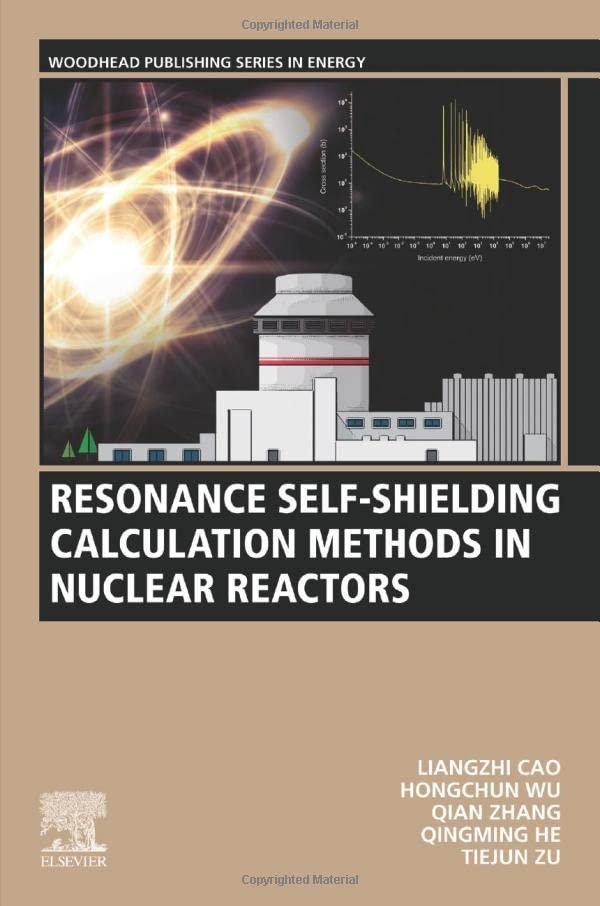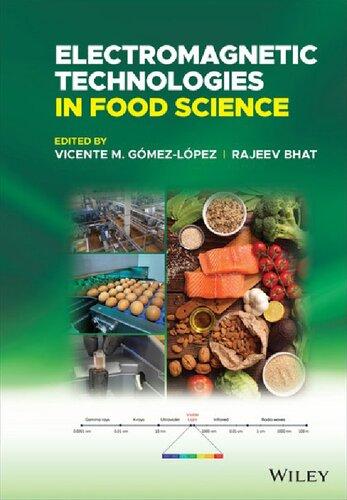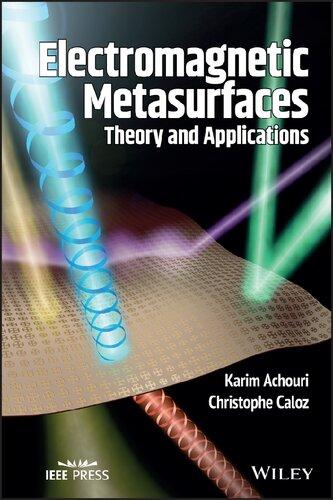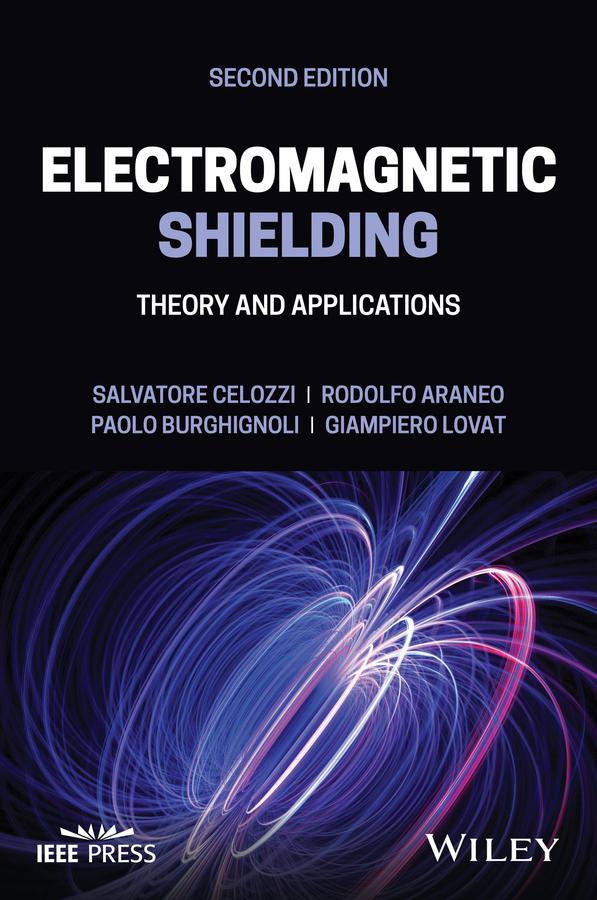Electromagnetic Shielding Salvatore Celozzi
Visit to download the full and correct content document: https://ebookmass.com/product/electromagnetic-shielding-salvatore-celozzi/
More products digital (pdf, epub, mobi) instant download maybe you interests ...
Neuroradiology Imaging Case Review Salvatore V Labruzzo
https://ebookmass.com/product/neuroradiology-imaging-case-reviewsalvatore-v-labruzzo/
Electromagnetic radiation Richard Freeman
https://ebookmass.com/product/electromagnetic-radiation-richardfreeman/
Integral Equations for Real-Life Multiscale
Electromagnetic Problems (Electromagnetic Waves) Francesca Vipiana
https://ebookmass.com/product/integral-equations-for-real-lifemultiscale-electromagnetic-problems-electromagnetic-wavesfrancesca-vipiana/
Towards a Unified Italy 1st ed. Edition Salvatore Dimaria
https://ebookmass.com/product/towards-a-unified-italy-1st-ededition-salvatore-dimaria/
Resonance Self-Shielding Calculation Methods in Nuclear Reactors Liangzhi Cao
https://ebookmass.com/product/resonance-self-shieldingcalculation-methods-in-nuclear-reactors-liangzhi-cao/
The Many and the One: A Philosophical Study of Plural Logic Salvatore Florio
https://ebookmass.com/product/the-many-and-the-one-aphilosophical-study-of-plural-logic-salvatore-florio/
Multifrequency Electromagnetic Data Interpretation for Subsurface Characterization Siddharth Misra
https://ebookmass.com/product/multifrequency-electromagneticdata-interpretation-for-subsurface-characterization-siddharthmisra/
Electromagnetic Technologies in Food Science Vicente M. Gómez-López
https://ebookmass.com/product/electromagnetic-technologies-infood-science-vicente-m-gomez-lopez/
Electromagnetic Metasurfaces: Theory and Applications (Wiley - IEEE) 1st Edition Karim Achouri
https://ebookmass.com/product/electromagnetic-metasurfacestheory-and-applications-wiley-ieee-1st-edition-karim-achouri/
ElectromagneticShielding
TheoryandApplications
SecondEdition
SalvatoreCelozzi
RodolfoAraneo
PaoloBurghignoli
GiampieroLovat
ElectricalEngineeringDepartment“LaSapienza”UniversityRome,Italy
Thiseditionfirstpublished2023 ©2023JohnWiley&Sons,Inc.Allrightsreserved.
EditionHistory
JohnWiley&Sons,Inc.(1e,2008)
Allrightsreserved.Nopartofthispublicationmaybereproduced,storedinaretrievalsystem,or transmitted,inanyformorbyanymeans,electronic,mechanical,photocopying,recordingor otherwise,exceptaspermittedbylaw.Adviceonhowtoobtainpermissiontoreusematerialfromthis titleisavailableathttp://www.wiley.com/go/permissions.
TherightofSalvatoreCelozzi,RodolfoAraneo,PaoloBurghignoli,andGiampieroLovattobe identifiedasauthorsofthisworkhasbeenassertedinaccordancewithlaw.
RegisteredOffice
JohnWiley&Sons,Inc.,111RiverStreet,Hoboken,NJ07030,USA
EditorialOffice
111RiverStreet,Hoboken,NJ07030,USA
Fordetailsofourglobaleditorialoffices,customerservices,andmoreinformationaboutWiley productsvisitusatwww.wiley.com.
Wileyalsopublishesitsbooksinavarietyofelectronicformatsandbyprint-on-demand.Somecontent thatappearsinstandardprintversionsofthisbookmaynotbeavailableinotherformats.
Trademarks:WileyandtheWileylogoaretrademarksorregisteredtrademarksofJohnWiley&Sons, Inc.and/oritsaffiliatesintheUnitedStatesandothercountriesandmaynotbeusedwithoutwritten permission.Allothertrademarksarethepropertyoftheirrespectiveowners.JohnWiley&Sons,Inc. isnotassociatedwithanyproductorvendormentionedinthisbook.
LimitofLiability/DisclaimerofWarranty
Whilethepublisherandauthorshaveusedtheirbesteffortsinpreparingthiswork,theymakeno representationsorwarrantieswithrespecttotheaccuracyorcompletenessofthecontentsofthiswork andspecificallydisclaimallwarranties,includingwithoutlimitationanyimpliedwarrantiesof merchantabilityorfitnessforaparticularpurpose.Nowarrantymaybecreatedorextendedbysales representatives,writtensalesmaterialsorpromotionalstatementsforthiswork.Thefactthatan organization,website,orproductisreferredtointhisworkasacitationand/orpotentialsourceof furtherinformationdoesnotmeanthatthepublisherandauthorsendorsetheinformationorservices theorganization,website,orproductmayprovideorrecommendationsitmaymake.Thisworkissold withtheunderstandingthatthepublisherisnotengagedinrenderingprofessionalservices.The adviceandstrategiescontainedhereinmaynotbesuitableforyoursituation.Youshouldconsultwith aspecialistwhereappropriate.Further,readersshouldbeawarethatwebsiteslistedinthisworkmay havechangedordisappearedbetweenwhenthisworkwaswrittenandwhenitisread.Neitherthe publishernorauthorsshallbeliableforanylossofprofitoranyothercommercialdamages,including butnotlimitedtospecial,incidental,consequential,orotherdamages.
LibraryofCongressCataloging-in-PublicationData
Names:Celozzi,Salvatore,author.
Title:Electromagneticshielding:theoryandapplications/Salvatore Celozzi,RodolfoAraneo,PaoloBurghignoli,GiampieroLovat.
Description:Secondedition.|Hoboken,NJ,USA:Wiley,2023.|Series: Wileyseriesinmicrowaveandopticalengineering|Includes bibliographicalreferencesandindex.
Identifiers:LCCN2022052851(print)|LCCN2022052852(ebook)|ISBN 9781119736288(hardback)|ISBN9781119736295(adobepdf)|ISBN 9781119736301(epub)
Subjects:LCSH:Shielding(Electricity)|Magneticshielding.
Classification:LCCTK454.4.M33C452022(print)|LCCTK454.4.M33 (ebook)|DDC621.34–dc23/eng/20221107
LCrecordavailableathttps://lccn.loc.gov/2022052851
LCebookrecordavailableathttps://lccn.loc.gov/2022052852
CoverDesign:Wiley
CoverImage:©Zita/Shutterstock
Setin9.5/12.5ptSTIXTwoTextbyStraive,Chennai,India
Contents
AbouttheAuthors ix
Preface xiii
1ElectromagneticsBehindShielding 1
1.1Definitions 1
1.2Notation,Symbology,andAcronyms 3
1.3MacroscopicElectromagnetismandMaxwell’sEquations 4
1.4ConstitutiveRelations 6
1.5DiscontinuitiesandSingularities 11
1.6InitialConditions,BoundaryConditions,andCausality 12
1.7Poynting’sTheoremandEnergyConsiderations 13
1.8FundamentalTheorems 16
1.8.1UniquenessTheorem 16
1.8.2ReciprocityTheorem 16
1.8.3EquivalencePrinciple 18
1.8.4Duality 19
1.8.5Symmetry 20
1.8.6ImagePrinciple 21
1.8.7Babinet’sPrinciple 21
1.9WaveEquations,Helmholtz’sEquations,Potentials,andGreen’s Functions 23
1.10BasicShieldingMechanisms 28
1.11SourceInsideorOutsidetheShieldingStructureandReciprocity 29 References 30
2ShieldingMaterials 33
2.1StandardMetallicandFerromagneticMaterials 33
2.2FerrimagneticMaterials 39
2.3FerroelectricMaterials 41
2.4ThinFilmsandConductiveCoatings 43
2.5OtherMaterialsSuitableforEMShieldingApplications 45
2.5.1StructuralMaterials 45
2.5.2ConductivePolymers 45
2.5.3ConductiveGlassesandTransparentMaterials 46
2.5.4Conductive(andFerromagneticorFerrimagnetic)Papers 46
2.6SpecialMaterials 46
2.6.1MetamaterialsandChiralMaterials 46
2.6.2CompositeMaterials 49
2.6.3Graphene 50
2.6.4OtherNanomaterials 53
2.6.5High-TemperatureSuperconductors 54 References 54
3FiguresofMeritforShieldingConfigurations 61
3.1(Local)ShieldingEffectiveness 61
3.2TheGlobalPointofView 64
3.3OtherProposalsofFiguresofMerit 65
3.4Energy-Based,Content-OrientedDefinition 69
3.5PerformanceofShieldedCables 69 References 70
4ShieldingEffectiveness:PlaneWaves 73
4.1ElectromagneticPlaneWaves:DefinitionsandProperties 73
4.2UniformPlaneWavesIncidentonaPlanarShield 75
4.2.1Transmission-LineApproach 76
4.2.2TheSinglePlanarShield 79
4.2.3Multiple(orLaminated)Shields 84
4.3PlaneWavesNormallyIncidentonCylindricalShieldingSurfaces 86
4.4PlaneWavesAgainstSphericalShields 93
4.5ExtensionoftheTLAnalogytoNear-FieldSources 94
4.5.1Examples 101 References 106
5ShieldingEffectiveness:Near-FieldSources 109
5.1Spectral-DomainApproach 109
5.1.1Maxwell’sEquationsintheSpectralDomain 110
5.1.2TM/TEDecompositionandEquivalentTransmissionLines 112
5.1.3SpectralDyadicGreen’sFunctions 116
5.1.4FieldEvaluationintheSpatialDomain 119
5.2LFMagneticShieldingofMetalPlates:ParallelLoop 122
5.2.1Spectral-DomainApproach 122
5.2.2VectorMagnetic-PotentialApproach 126
5.2.3ApproximateFormulations 127
5.3LFMagneticShieldingofMetalPlates:PerpendicularLoop 130
5.4LFMagneticShieldingofMetalPlates:ParallelCurrentLine 134 References 137
6TransientShielding 141
6.1PerformanceParameters:DefinitionsandProperties 141
6.2TransientSources:PlaneWavesandDipoles 145
6.2.1TransientUniformPlaneWaves 145
6.2.2TransientDipoles 148
6.3NumericalSolutionsviaInverse-FourierTransform 149
6.4AnalyticalSolutionsinCanonicalConfigurations 150
6.4.1TransientPlaneWavesonaSingle-LayerScreen 151
6.4.2TransientDipoles:TheCagniard–deHoopMethod 155
6.4.2.1ThinConductiveSheet 159
6.4.2.2GrapheneSheet 161
6.4.2.3Generalizations:ThickShields,MultilayeredShields 164 References 164
7NumericalMethodsforShieldingAnalyses 169
7.1Finite-ElementMethod 171
7.2MethodofMoments 187
7.3Finite-DifferenceTime-DomainMethod 208
7.4FiniteIntegrationTechnique 221
7.5Transmission-LineMatrixMethod 226
7.6PartialElementEquivalentCircuitMethod 230
7.7TestCaseforComparingNumericalMethods 239 References 242
8AperturesinPlanarMetalScreens 257
8.1HistoricalBackground 258
8.2StatementoftheProblem 259
8.3Low-FrequencyAnalysis:TransmissionThroughSmall Apertures 260
8.4TheSmallCircularAperture 261
8.4.1Bethe’sTheory 262
8.4.2Spectral-DomainFormulation 267
8.5SmallNoncircularApertures 269
8.6FiniteNumberofSmallApertures 269
8.7AperturesofArbitraryShape:Integral-EquationFormulation 272
8.8RulesofThumb 275 References 277
9Enclosures 283
9.1ModalExpansionofElectromagneticFieldsInsideaMetallic Enclosure 284
9.2OscillationsInsideanIdealSource-FreeEnclosure 287
9.3TheEnclosureDyadicGreenFunction 288
9.4ExcitationofaMetallicEnclosure 291
9.5DampedOscillationsInsideEnclosureswithLossyWallsandQuality Factor 292
9.6AperturesinPerfectlyConductingEnclosures 294
9.6.1Small-ApertureApproximation 295
9.6.2RigorousAnalysis:Integral-EquationFormulation 297
9.6.3Aperture-CavityResonances 299
9.7SmallLoadingEffects 301
9.8TheRectangularEnclosure 302
9.8.1SymmetryConsiderations 306
9.9ShieldingEffectivenessofaRectangularEnclosurewithan Aperture 307
9.9.1NumericalModels 307
9.9.2AnalyticalModels 311
9.10CaseStudy:RectangularEnclosurewithaCircularAperture 315
9.10.1ExternalSources:Plane-WaveExcitation 316
9.10.2InternalSources:ElectricandMagneticDipoleExcitations 321
9.11OverallPerformanceintheFrequencyDomain 326
9.12OverallPerformanceintheTimeDomain 328 References 332
10CableShielding 339
10.1TransferImpedanceinTubularShieldedCablesandAperture Effects 340
10.2RelationshipBetweenTransferImpedanceandShielding Effectiveness 345
10.3ActualCablesandHarnesses 347 References 348
11ComponentsandInstallationGuidelines 351
11.1Gaskets 351
11.2ShieldedWindows 355
11.3ElectromagneticAbsorbers 357
11.4ShieldedConnectors 358
11.5Air-VentilationSystems 358
11.6Fuses,Switches,andOtherSimilarComponents 359 References 359
12FrequencySelectiveSurfaces 363
12.1AnalysisofPeriodicStructures 364
12.1.1FloquetTheoremandSpatialHarmonics 364
12.1.2Plane-WaveIncidenceonaPlanar1DPeriodicStructure 366
12.1.3Plane-WaveIncidenceonaPlanar2DPeriodicStructure 367
12.1.4IntegralEquationFormulationforPlane-WaveIncidenceandPeriodic Green’sFunction 369
12.1.5DipoleExcitationofPlanar2DPeriodicStructure 373
12.2High-andLow-PassFSSs 376
12.3Band-PassandBand-StopFSSs 380
12.3.1Center-ConnectedElementsor N -PoleElements 381
12.3.2Loop-TypeElements 382
12.3.3Solid-Interior-TypeElements 382
12.3.4CombinationsandFractalElements 382
12.4RecentTrendsinFSSs 383
12.4.1MultilayerandCascadedFSSs 383
12.4.23-DFSSs 385
12.4.32.5-DFSSs 387
12.4.4ReconfigurableandActiveFSSs 387
12.5AbsorbingFSSs 388
12.5.1CircuitAnalogAbsorbers 389
12.5.2AbsorptiveFrequencySelectiveReflection/Transmission Structures 390
12.5.2.1AFSRStructures 391
12.5.2.2AFSTStructures(Frequency-SelectiveRasorbers) 391
12.6ModelingandDesignofFSSs 392 References 394
13ShieldingDesignGuidelines 409
13.1EstablishmentoftheShieldingRequirements 410
13.2AssessmentoftheNumberandTypesofFunctional Discontinuities 412
13.3AssessmentofDimensionalConstraintsandNon-Electromagnetic CharacteristicsofMaterials 413
13.4EstimationofShieldingPerformance 413 References 414
14UncommonWaysofShielding 417
14.1ActiveShielding 417
14.2PartialShields 422
14.3ChiralShielding 425
14.4MetamaterialShielding 426 References 432
AppendixAElectrostaticShielding 439
A.1BasicLawsofElectrostatics 440
A.2ElectrostaticTools:ElectrostaticPotentialandGreen’sFunctions 442
A.3ElectrostaticShields 446
A.3.1ConductiveElectrostaticShields 446
A.3.2DielectricElectrostaticShields 450
A.3.3ApertureEffectsinConductiveShields 455 References 457
AppendixBMagneticShielding 459
B.1MagneticShieldingMechanism 460
B.2CalculationMethods 463
B.3Boundary-ValueProblems 465
B.3.1SphericalMagneticConductingShield 465
B.3.2CylindricalMagneticConductingShieldinaTransverseMagnetic Field 471
B.3.3CylindricalMagneticConductingShieldinaParallelMagnetic Field 475
B.4FerromagneticShieldswithHysteresis 477 References 478
AppendixCStatisticalElectromagneticsforShieldingEnclosures 483
C.1StatisticalAnalyses 486
C.2Examples 489 References 495
AppendixDStandardsandMeasurementMethodsforShielding Applications 499
D.1MIL-STD285andIEEESTD-299 501
D.2NSA65-6andNSA94-106 506
D.3ASTME1851 506
D.4ASTMD4935 508
D.5MIL-STD461G 510
D.6CodeofFederalRegulations,Title47,Part15 517
D.7ANSI/SCTE48-3 520
D.8MIL-STD1377 521
D.9IECStandards 522
D.10ITU-TRecommendations 527
D.11AutomotiveStandards 529 References 535
Index 539
AbouttheAuthors
SalvatoreCelozzi wasborninRome,Italy,in1964.Hereceivedthe Laurea (cum laude)andPh.D.degreesfrom LaSapienza UniversityofRomein1988and1994, respectively.
HeisaFullProfessorattheUniversityofRome“LaSapienza”since2005.Hehas authoredmorethan150papersininternationaljournalsorconferenceproceedings,mainlyinthefieldsofelectromagneticshieldingandtransmissionlines.He istheco-authorofthefirsteditionofthebookElectromagneticShielding(Wiley, 2008).
Prof.CelozzihasbeentheChairoftheEMCChapteroftheIEEECentraland SouthItalySectionfrom1997to2006.HewastherecipientoftheBestSymposium PaperAwardin1998and2011attheIEEEEMCConferences.In2002,hewasthe recipientoftheIEEEEMCSocietyAward“CertificateofTechnicalAchievement” foroutstandingcontributionstotheEMCSociety,especiallyinthefieldofshieldingandtransmissionlinetheoryappliedtoprintedcircuitboards.Hewasserving asanAssociateEditorfortheIEEETRANSACTIONSON ELECTROMAGNETIC COMPATIBILITY from1995to2000andisservinginthesamerolesince2016.
RodolfoAraneo wasborninRome,Italy,in1975.Hereceivedthe Laurea (cum laude)andPh.D.degreesinelectricalengineeringfrom LaSapienza Universityof Romein1999and2002,respectively.HeisFullProfessorinthesameUniversity since2021.
In1999,hewasaVisitingStudentattheNationalInstituteofStandardsand Technology,Boulder,CO,USA,wherehewasengagedinTEMcellsandshielding.In2000,hewasaVisitingResearcherattheDepartmentofElectricaland ComputerEngineering,UniversityofMissouri-Rolla(UMR),Rolla,MO,USA, wherehewasengagedinprintedcircuitboardsandfinite-differencetime-domain techniques.HeiscurrentlyaFullProfessorat LaSapienza UniversityofRome. Hehasauthoredmorethan200papersininternationaljournalsandconference proceedings.Heistheco-authorofthefirsteditionofthebookElectromagnetic
Shielding(Wiley,2008).Heservesasareviewerforseveralinternationaljournals. Hisresearchinterestsincludeelectromagneticcompatibility,energyharvesting, piezotronicsbasedonpiezoelectricZnOnanostructures,grapheneelectrodynamics,developmentofnumericalandanalyticaltechniquesformodelinghigh-speed printedcircuitboards,shielding,transmissionlines,periodicstructures,and devicesbasedongraphene.
Dr.AraneowastherecipientofthePastPresident’sMemorialAwardin1999 fromtheIEEEElectromagneticCompatibilitySociety.HeiscurrentlyaGeneral ChairoftheIEEEInternationalConferenceonEnvironmentandElectricalEngineering.In2011,hewastherecipientoftheBestPaperSymposiumAwardatthe 2011IEEEEMC-SInternationalSymposiumonElectromagneticCompatibility.
PaoloBurghignoli wasborninRome,Italy,in1973.Hereceivedthe Laurea degree(cumlaude)inelectronicengineeringandthePh.D.degreeinappliedelectromagneticsfrom LaSapienza UniversityofRome,Rome,Italy,in1997and2001, respectively.
In1997,hejoinedtheDepartmentofElectronicEngineering,SapienzaUniversityofRome,whereheiscurrentlyAssociateProfessorwiththeDepartmentof InformationEngineering,ElectronicsandTelecommunications.In2004,hewasa VisitingResearchAssistantProfessorattheUniversityofHouston,Houston,TX, USA.From2010to2015,hewasanAssistantProfessorat LaSapienza University ofRome,wherehehasbeenanAssociateProfessorsince2015.In2017,hereceived theNationalScientificQualificationfortheroleofaFullProfessorofelectromagneticfieldsatItalianUniversities.Heiscurrentlyteachingcoursesinelectromagneticfields,advancedantennaengineering,andanalyticaltechniquesforwave phenomenaforB.Sc.,M.Sc.,andPh.D.programsintheICTareaat LaSapienza UniversityofRome.Hehasauthoredabout250articlesininternationaljournals, books,andconferenceproceedings.Hisresearchinterestsincludetheanalysisand designofplanarantennasandarrays,leakagephenomenainuniformandperiodicstructures,numericalmethodsforintegralequationsandperiodicstructures, propagationandradiationinmetamaterials,electromagneticshielding,transient electromagnetics,andgrapheneelectromagnetics.
Dr.Burghignoliwasarecipientofthe“GiorgioBarzilai”LaureaPrizein 1996–1997presentedbytheformerInstituteofElectricalandElectronicsEngineers(IEEE)CentralandSouthItalySection,the2003IEEEMTT-SGraduate Fellowship,andthe2005RajMittraTravelGrantforjuniorresearcherspresented attheIEEEAP-SSymposiumonAntennasandPropagation,Washington,DC, USA.HewasaSecretaryofthe12th EuropeanMicrowaveWeekin2009anda memberoftheScientificBoardandtheLocalOrganizingCommitteeofthe41st PhotonicsandElectromagneticsResearchSymposiumin2019.In2016and2020, theIEEEAntennasandPropagationSocietyrecognizedhimasanoutstanding
reviewerfortheIEEETRANSACTIONSON ANTENNASAND PROPAGATION.Heiscurrently anAssociateEditoroftheInstitutionofEngineeringandTechnology(IET) ElectronicsLetters andthe InternationalJournalofAntennasandPropagation (Hindawi).HeisaseniormemberoftheIEEE.
GiampieroLovat wasborninRome,Italy,in1975.Hereceivedthe Laurea degree (cumlaude)inelectronicengineeringandthePh.D.degreeinelectromagneticsin 2001andin2005,respectively,bothfrom LaSapienza UniversityofRome.Since 2010,heisanAssistantProfessorintheAstronautical,Electrical,andEnergetic EngineeringDepartment(DIAEE)atthesameUniversity,andsince2015,hehas beenqualifiedfortheroleofFullProfessorinaNationalScientificCompetition. Hehasbeendoingresearchactivityonleakywaves,periodicstructures,electrodynamicsofgraphene,transientelectromagnetics,andelectromagneticshielding. Heistheco-authorofmorethan170papersoninternationalbooks,journals,and conferenceproceedings.Heistheco-authorofthefirsteditionofthebookElectromagneticShielding(Wiley,2008).
In2005,hewastherecipientoftheYoungScientistAwardattheURSIGeneral AssemblyinNewDelhi,India.Heistheauthorof FastBreakingPapers,October 2007 inEEandCS,aboutmetamaterials(apaperthathadthehighestpercentage increaseincitationsinEssentialScienceIndicators,ESI).In2011,hewastherecipientoftheBestPaperSymposiumAwardatthe2011IEEEEMC-SInternational SymposiumonElectromagneticCompatibility.In2020,hehasbeenincludedin therankingofthetop2%worldscientistsrecentlypublishedonPlosOne(https:// doi.org/10.1371/journal.pbio.3000918).In2021,hehasbeenselectedasadistinguishedreviewerofIEEETRANSACTIONSON ELECTROMAGNETIC COMPATIBILITY.
Preface
ThisisthesecondeditionofourbookElectromagneticShielding.Asforthefirst edition,theassumedbackgroundofthereaderislimitedtostandardundergraduatetopicsinphysicsandmathematics.
Thiseditionhasbeencompletelyupdatedaccordingtotheoreticalandtechnologicalprogressinthefieldofelectromagneticshielding:thebooknowcomprises 14chaptersand4appendices;anoverviewoftheircontentisprovidednext,highlightingthechangeswithrespecttothefirstedition.Chapter1introducesthe basicelectromagnetictheorybehindelectromagneticshielding;thefundamental theoremsarenowalsopresentedinthetimedomain,whilesymmetry,duality, andBabinetprincipleshavebeenaddedfortheirimportanceintreatingclassicalshieldingproblems.Anintroductiontowaveequationsandpotentialsand Greenfunctionsinthetimedomainhasalsobeenaddedtocoverallthebasictools toanalyzetransientshieldingproblems.Chapter2describesthearsenalofconventionalandlessconventionalmaterialsforelectromagneticshielding;anentire newparagraphhasbeendevotedtotheelectromagneticdescriptionofgraphene, amaterialthathasbecomeoneofthemostattractivematerialsinthefieldofelectromagneticlossandabsorption.Chapter3introducesallthefiguresofmeritfor aquantitativeanalysisoftheshieldingperformanceofagivenstructure.Chapter 4coversthesubjectofelectromagneticshieldingofplanar,cylindrical,andsphericalscreensagainstplanewaves;anentirenewparagraphisdevotedtopresenting examplesthathelptounderstandtheextensionofthetransmissionlineanalogy tonear-fieldsources.Chapters5and6areentirelynew.Chapter5considersthe importanttopicofnear-fieldsourcesinthepresenceofplanarscreensandprovides anextensiveintroductiontothespectraldomainapproach.Chapter6introduces thereadertotheemergentareaoftransientshieldinganalysisofferingsuitable figuresofmerit,definingthefundamentaltransientsources,anddescribingthe numericalandanalyticalapproachestoanalyzebasicconfigurations.Chapter7 isathoroughintroductiontotheprincipalnumericalmethodsusedinelectromagneticsandareherepresentedinconnectionwithelectromagneticshielding
problems;moreover,manyillustrativeexampleshavebeenaddedtopresentthe characteristicsofdifferentnumericalapproacheswithparticularreferencetothe analysisoftheshieldingcharacteristicsofenclosures.Chapter8treatstheimportanttopicofelectromagneticpenetrationthroughaperturesinplanarscreens;the circularapertureisnowanalyzedindetail,illustratingtheverylastdevelopments. EnclosuresareconsideredinChapter9:thefundamentalcaseofarectangular enclosurewitharectangularapertureisnowdescribedindetail,consideringboth anumericalsolutionbasedontheMethod-of-Momentsandapproximateanalyticalapproaches.Moreover,twoentirelynewparagraphshavebeenaddedtopresent theoverallperformanceofanenclosureinbothfrequencyandtimedomains. Chapter10consistsinabriefintroductiontocableshielding,whileChapter11 dealswiththemostcommoncomponentsinstalledinmostofshieldingconfigurations.Chapter12introducestheimportanttopicoffrequency-selectivesurfaces; here,theanalysishasbeenextendedtoincludenotonlyaplanewaveexcitation butalsoafinitesource:forthisreason,anintegralequationformulationforthe solutionoftheelectromagneticproblemispresentedtogetherwithanintroduction totheperiodicGreenfunctioncalculation.Theliteratureonthistopicisgrowing almostexponentially,andaplethoraofnewstructureshavebeenproposedsothat somenewparagraphshavebeenaddedtopresentsomeofthemostrecentdevelopments.Finally,Chapter13coverssomeissuesinshieldingdesignprocedures, whileChapter14introducestosomeuncommonwaysofshielding:inparticular, theuseofmetamaterialshasbeenextensivelyreviewed.
Asinthefirstedition,twoappendicesaredevotedtoelectrostaticandmagnetostaticshielding.AnewAppendixChasbeenadded,whichprovidesanintroductiontotheuseofstatisticalelectromagneticsinelectromagneticshielding,while thelastappendix(AppendixD)coversstandardsandmeasurementprocedures andhasbeenobviouslyupdatedwithrespecttothefirstedition.
WewouldliketoacknowledgethesupportprovidedwithinWiley-Interscience byalltheStaffandinparticularthepatientassistancegivenbyTeresaNetzler.
Rome 29June2022
SalvatoreCelozzi
RodolfoAraneo PaoloBurghignoli GiampieroLovat
ElectromagneticsBehindShielding
Shieldinganelectromagneticfieldisacomplexandsometimesformidabletask. Thereasonsaremany,sincetheeffectivenessofanystrategyortechniqueaimed atthereductionoftheelectromagneticfieldlevelsinaprescribedregiondepends largelyuponthesourcecharacteristics,theshieldgeometry,andtheinvolved materials.Moreover,asitoftenhappenswhencommontermsareadoptedina technicalcontext,differentdefinitionsofshieldingexist.Inelectromagneticsthe shieldingeffectiveness (SE)isaconciseparametergenerallyappliedtoquantify shieldingperformance.However,avarietyofstandardsareadoptedforthe measurementortheassessmentoftheperformanceofagivenshieldingstructure. Unfortunately,theyallcallforveryspecificconditionsinthemeasurementsetup. Theresultsthereforeareoftenuselessifthesourceorsystemconfigurations differevenslightly.Lastamongthedifficultiesthatariseinthesolutionof actualshieldingproblemsarethedifficultiesinherentinboththesolutionofthe boundaryvalueproblemandthedescriptionoftheelectromagneticproblemin mathematicalform.
1.1Definitions
Toestablishacommonground,wewillbeginwithsomeusefuldefinitions.An electromagneticshieldcanbedefinedas[1]:
[A]housing,screen,orotherobject,usuallyconducting,thatsubstantially reducestheeffectofelectricormagneticfieldsononesidethereof,upon devicesorcircuitsontheotherside.
Thisdefinitionisrestrictivebecauseitimplicitlyassumesthepresenceofa “victim.”Thedefinitionisalsobasedonthemisconceptionthatthesourceand observationpointsareinoppositepositionswithrespecttotheshield,andit
ElectromagneticShielding:TheoryandApplications,SecondEdition. SalvatoreCelozzi,RodolfoAraneo,PaoloBurghignoli,andGiampieroLovat. ©2023JohnWiley&Sons,Inc.Published2023byJohnWiley&Sons,Inc.
1ElectromagneticsBehindShielding
includestheword“substantially”whosemeaningisobscureandintroducesan unacceptablelevelofarbitrariness.
Anotherdefinitionofelectromagneticshieldingevenmorerestrictiveis[2]:
[A]meansofpreventingtwocircuitsfromelectromagneticcouplingby placingatleastoneofthecircuitsinagroundedenclosureofmagnetic conductivematerial.
Themostappropriatedefinitionentailsabroadviewofthephenomenon:
[A]nymeansusedforthereductionoftheelectromagneticfieldina prescribedregion.
Noticethatnoreferencetoshape,material,andgroundingoftheshieldisnecessarytodefineitspurpose.
Ingeneral,electromagneticshieldingrepresentsawaytowardtheimprovement oftheelectromagnetic-compatibility(EMC)(definedasthecapabilityofelectronic equipmentorsystemstobeoperatedintheintendedelectromagneticenvironment atdesignlevelsofefficiency)performanceofsingledevices,apparatus,orsystems. Biologicalsystemsareincluded,forwhichitiscorrecttotalkabouthealthrather thanEMC.Electromagneticshieldingisalsousedtopreventsensitiveinformation frombeingintercepted,thatis,toguaranteecommunicationsecurity.
Electromagneticshieldingisnotimplementedonlyforsuchpurposes.Some sortofelectromagneticshieldingisalmostalwaysusedinelectricalandelectronic systemstoreducetheirelectromagneticemissionsandtoincreasetheirelectromagneticimmunityagainstexternalfields.Incaseswheretheavailablemethodologiesforreducingthesourcelevelsofelectromagneticemissionorstrengthening thevictimimmunityarenotavailableorarenotsufficienttoensurethecorrect operationofdevicesorsystems,areductionofthecouplingbetweenthesource andthevictim(eitherpresentoronlypotentiallypresent)isoftenthepreferred choice.
Theimmunityofthevictimsisgenerallyobtainedbymeansoffiltersthatare analogoustoelectromagneticshieldingwithrespecttoconductedemissionsand immunity.Themainadvantageoffiltersisthattheyare“local”devices.Thus, wherethenumberofsensitivecomponentstobeprotectedislimited,thecost offilteringmaybemuchlowerthanthatofshielding.Themaindisadvantageof usingafilteristhatitisabletoarrestonlyinterferenceswhosecharacteristics (e.g.,levelormodeoftransmission)aredifferentfromthoseofthedevice,sothe correctoperationinthepresenceofsometypesofinterferenceisnotguaranteed. Anotherseriousdisadvantageofthefilterisitsinadequacyoritslowefficiencyfor thepreventionofdatadetection.
Ingeneral,designingafilterismuchsimplerthandesigningashield.Thefilter designerhasonlytoconsiderthewaveformoftheinterference(intermsofvoltage orcurrent)andthevaluesoftheinputandoutputimpedance[3],whereasthe shielddesignermustincludealargeamountofinputinformationandconstraints, asitwillbediscussedthroughoutthebook.
Anyshieldinganalysisbeginsbyanaccurateexaminationoftheshieldgeometry [4–7].Althoughtheidentificationofthecouplingpathsbetweenthemainspace regionsisoftentrivial,sometimesitdeservesmorecare,especiallyincomplexconfigurations.Thecomplexityofashieldisassociatedwithitsshape,apertures,the componentsidentifiedasthemostsusceptible,thesourcecharacteristics,andso forth.Subdividingitsconfigurationintoseveralsubsystems(eachsimplerthanthe originaloneandinteractingwiththeothersinadefiniteway)isalwaysauseful approachtoidentifycriticalproblemsandfindwaystofixandimprovetheoverall performance[5].Thisapproachisbasedontheassumptionthateachsubsystem canbeanalyzed,andhenceitsbehaviorcanbecharacterized,independentlyofthe otherscomponents/subsystems.Forinstance,inthefrequencydomainandfora linearsubsystem,foreachcouplingpathandforeachsusceptibleelement,itispossibletoinvestigatethetransferfunction T (��) relatingtheexternalsourceinput S (��) andthevictimoutput V (��) characteristicsas V (��) = U (��) + T (��) S (��), where U (��) representsthesubsystemoutputintheabsenceofexternal-source excitation.Inthepresenceofmultilevelbarriers,thetransferfunction T (��) may ensuefromtheproductofthetransferfunctionsassociatedwitheachbarrierlevel. Theforegoingapproachcanbegeneralizedforabetterunderstandingofthe shieldingproblemincomplexconfigurations.However,itisoftensufficientto consideronlythemostcriticalsubsystemsandcomponents,ononehand,andthe mostimportantcouplingpaths,ontheotherhand,inordertosolvetheprincipal shieldingproblemsandthusimprovetheoverallperformance[8].Thegeneral approachisobviouslysuitableinadesigncontext.Acompleteanalysisofthe relationsbetweenshieldingandgroundingislefttothespecificliterature[4,9–11].
1.2Notation,Symbology,andAcronyms
Theabbreviationsandsymbolsusedthroughoutthebookarebrieflysummarized hereinordertomakeclearthestandardwehavechosentoadopt.Ofcourse,we willwarnthereaderanytimeanexceptionoccurs.
Scalarquantitiesareshowninitalictype(e.g., V and t),whilevectorsareshown inboldface(e.g., e and H);dyadicsareshowninboldfacewithanunderbar (e.g., �� and G).Aphysicalquantitythatdependsontimeandspacevariablesis indicatedwithalowercaseletter(e.g., e (r, t) fortheelectricfield).TheFourier transformwithrespecttothetimevariableisindicatedwiththecorresponding
1ElectromagneticsBehindShielding
uppercaseletter(e.g., E (r,��) whiletheFouriertransformwithrespecttothe spatialvariablesisindicatedbyatilde(e.g., ̃ e (k, t));whentheFouriertransform withrespecttobothtimeandspatialvariablesisconsidered,thetwosymbologies arecombined(e.g., E (k,��)).
Thesetsofspatialvariablesinrectangular,cylindrical,andsphericalcoordinates aredenotedby (x , y, z), (��,��, z),and (r ,��,�� ),respectively.TheboldfaceLatinletter u isusedtoindicateaunitvectorandasubscriptisusedtoindicateitsdirection: forinstance, (ux , uy , uz ), (u�� , u�� , uz ),and (ur , u�� , u�� ) denotetheunitvectorsin therectangular,cylindrical,andsphericalcoordinatesystem,respectively.
Wewillusethe“del”notation ∇ withthesuitableproducttypetoindicategradient(∇ [⋅]),curl(∇× [⋅])anddivergenceoperators(∇ ⋅ [⋅]);theLaplacianoperatorisindicatedas ∇2 [⋅].Theimaginaryunitisdenotedwithj = √ 1andthe asterisk ∗ asasuperscriptofacomplexquantitydenotesitscomplexconjugate.The realandimaginarypartsofacomplexquantityareindicatedbyRe [⋅] andIm [⋅], respectively,whiletheprincipalargumentisindicatedbythefunctionArg [ ].The base-10logarithmandthenaturallogarithmareindicatedbymeansofthelog (⋅) andln (⋅) functions,respectively.
Finally,throughoutthebook,theinternationalsystemofunitsSIisadopted, electromagneticisabbreviatedasEM,andshieldingeffectivenessasSE.
1.3MacroscopicElectromagnetismandMaxwell’s Equations
Acompletedescriptionofthemacroscopicelectromagnetismisprovidedby Maxwell’sequationswhosevalidityistakenasapostulate.Maxwell’sequations canbeusedeitherinadifferential(local)formorinanintegral(global)form, andtherehasbeenalongdebateoverwhichisthebestrepresentation(e.g., DavidHilbertpreferredtheintegralformwhereasArnoldSommerfeldfound moresuitablethedifferentialform,fromwhichspecialrelativityfollowsmore naturally[12]).Whenstationarymediaareconsidered,themaindifference betweenthetworepresentationsconsistsinhowtheyaccountfordiscontinuities ofmaterialsand/orsources.Basically,ifoneadoptsthedifferentialform,some boundaryconditionsatsurfacediscontinuitiesmustbepostulated;ontheother hand,iftheintegralformsarechosen,onemustpostulatetheirvalidityacross suchdiscontinuities[13,14].
Maxwell’sequationscanbeexpressedinscalar,vector,ortensorform,anddifferentvectorfieldscanbeconsideredasfundamental.Afulldescriptionofallthese detailscanbefound,e.g.,in[12].Inthisbookweassumethefollowingdifferential formoftheMaxwellequations:
Fromtheseequationsthecontinuityequationcanbederivedas
InthisframeworktheEMfield—describedbyvectors e (electricfield,unitof measureV/m), h (magneticfield,unitofmeasureA/m), d (electricdisplacement, unitofmeasureC/m2 ),and b (magneticinduction,unitofmeasureWb/m2 orT)— arisesfromsources j (electriccurrentdensity,unitofmeasureA/m2 )and ��e (electricchargedensity,unitofmeasureC/m3 ).Further,exceptforstaticfields,ifatime canbefoundbeforewhichallthefieldsandsourcesareidenticallyzero,thedivergenceequationsin(1.1)areaconsequenceofthecurlequations[12],sounderthis assumptionthecurlequationscanbetakenasindependent.
ItcanbeusefultomaketheMaxwellequationssymmetricbyintroducingfictitiousmagneticcurrentandchargedensities m and ��m (unitsofmeasureV/m2 andWb/m3 ,respectively),whichsatisfyacontinuityequationsimilarto(1.2)so that(1.1)canberewrittenas ∇×
Asitwillbeshownlater,theequivalenceprincipleindeedrequirestheintroductionofsuchfictitiousquantities.
ItisalsousefultoidentifyinMaxwell’sequationssome“impressed”source terms,whichareindependentoftheunknownfieldsandareinsteadduetoother externalsources(magneticsourcescanbeonlyofthistype).Such“impressed” sourcesareconsideredasknowntermsinMaxwell’sdifferentialequationsand indicatedbythesubscript“i.”Inthisconnection,(1.3)canbeexpressedas
1ElectromagneticsBehindShielding
Theimpressed-sourceconceptiswellknownincircuittheory.Forexample, independentvoltagesourcesarevoltageexcitationsthatareindependentofpossibleloads.
Althoughboththesourcesandthefieldscannothavetruespatialdiscontinuities,fromamodelingpointofview,itisusefultoconsideradditionallysources inoneortwodimensions:surface-andline-sourcedensitiescanbeintroducedin termsoftheDiracdeltadistribution �� ,as(singular)idealizationsofactualcontinuousvolumedensities[12,15].
Finally,inthefrequencydomain,Maxwell’scurlequationsareexpressedas
wheretheuppercasequantitiesindicateeithertheFouriertransformorthephasorsassociatedwiththecorrespondingtime-domainfields.Notethatinthistext thefollowingdefinitionoftemporalFouriertransformwillbeadopted:
withthecorrespondinginverseFouriertransform:
whereasinthephasordomainatime-harmonicdependenceexp (j��t ) isassumed:
where F0 ≥ 0and F = F0 ej�� isthephasorassociatedwith f (t).Thesamedefinitionsalsoapplyforvectorfunctions.
1.4ConstitutiveRelations
BydirectinspectionofMaxwell’scurlequationsin(1.1),itisimmediatelyclear thattheyrepresentsixscalarequationswith15unknownquantities.Withfewer equationsthanunknownsnouniquesolutioncanbeidentified(theproblemis saidtobeindefinite).Theadditionalequationsrequiredtomaketheproblemdefinitearethosethatdescribetherelationsamongthefieldquantities e, h, d, b,and j,enforcedbythemediumfillingtheregionwheretheEMphenomenaoccur.Such relationsarecalled constitutiverelations,andtheydependonthepropertiesofthe mediumsupportingtheEMfield.
Innon-movingmedia,withtheexclusionofmagnetoelectricandchiralmaterials,the d fielddependsonlyonthe e field, b dependsonlyon h,and j depends
onlyon e.Thesedependencesareexpressedasconstitutiverelations,withthe e and h fieldsregardedascausesandthe d, b,and j fieldsaseffects.
Ifalinearcombinationofcauses(withgivencoefficients)producesalinear combinationofeffects(withthesamecoefficients),themediumissaidtobe linear (otherwise nonlinear ).Ingeneral,theconstitutiverelationsaredescribed byasetofconstitutiveparametersandasetofconstitutiveoperatorsthatrelate theabove-mentionedfieldsinsidearegionofspace.Theconstitutiveparameters canbeconstantsofproportionalitybetweenthefields(themediumisthussaid isotropic),ortheycanbecomponentsinatensorrelationship(themediumissaid anisotropic).Iftheconstitutiveparametersareconstantwithinacertainregion ofspace,themediumissaid homogeneous inthatregion(otherwise,themedium isinhomogeneous).Iftheconstitutiveparametersareconstantwithtime,the mediumissaid stationary (otherwise,themediumisnonstationary).
Iftheconstitutiveoperatorsareexpressedintermsoftimeintegrals,themedium issaidtobe temporallydispersive.Iftheseoperatorsinvolvespaceintegrals,the mediumissaidtobe spatiallydispersive.Finally,wenotethattheconstitutive parametersmaydependonothernonelectromagneticpropertiesofthematerial andexternalconditions(temperature,pressure,etc.).
Thesimplestmediumis vacuum.Invacuumthefollowingconstitutiverelations hold:
Thequantities
arethefree-spacemagneticpermeabilityanddielectricpermittivity,respectively. Theirvaluesarerelatedtothespeedoflightinfreespace c0 through c0 = 1∕√��0 ��0 , whoseexactvalueis c0 = 2.99792458 ⋅ 108 m/s;theabovetwovaluesfor ��0 correspondtoapproximating c0 ≃ 3 108 m/sand c0 ≃ 2.998 108 m/s,respectively.
Foralinear,homogeneous,isotropic,andnondispersivematerial,theconstitutiverelationscanbeexpressedas
d (r, t) = ��e (r, t) , b (r, t) = �� h (r, t) , j (r, t) = �� e (r, t) , (1.10) where �� and �� arethemagneticpermeabilityanddielectricpermittivityofthe medium,respectively.Thesequantitiescanberelatedtothecorresponding
1UntilMay20th 2020thiswasanexactvalue.Sincethatdate,aredefinitionoftheSIbaseunits assignedtotheelementarycharge(e.g.,theelectroncharge)anexactvalue: qe = 1.602176634⋅ 10 19 C,therebymakingthereportedvalueofthevacuumpermeability ��0 anapproximate quantity.
1ElectromagneticsBehindShielding
free-spacequantitiesthroughthedimensionlessrelativepermeability ��r and relativepermittivity ��r ,suchthat �� = ��r ��0 and �� = ��r ��0 .Thedimensionless quantities ��m = ��r 1and ��e = ��r 1(knownasmagneticandelectricsusceptibilities,respectively)arealsoused.Thethirdequationof(1.10)expressesthe Ohmlawinlocalform,and �� istheconductivityofthemedium(unitofmeasure S/m).
Forsuchasimplemedium,thanksto(1.10),Maxwell’sequations(1.4)canbe rewrittenas
Ifthemediumisinhomogeneous, ��,��,or �� arequantitiesthatdependonthe vectorposition r.Ifthemediumisanisotropic(butstilllinearandnondispersive) theconstitutiverelationscanbewrittenas d (r, t) = �� ⋅ e (r, t) ,
where ��, ��,and �� arecalledthepermittivitytensor,thepermeabilitytensor,and theconductivitytensor,respectively(theyarespace-dependentquantitiesfor inhomogeneousmedia).
Forlinear,inhomogeneous,anisotropic,stationary,andtemporallydispersive materials,theconstitutiverelationbetween d and e isexpressedbyasuperposition integralas
Theconstitutiverelationsforotherfieldquantitieshavesimilarexpressions. Causalityisimpliedbytheupperlimit t intheintegrals(thismeansthattheeffect cannotdependonfuturevaluesofthecause).Ifthemediumisnonstationary, �� (r, t, t′ ) hastobeusedinsteadof �� (r, t t′ ).Theimportantconceptexpressed by(1.13)isthatthebehaviorof d atthetime t dependsnotonlyonthevalueof e atthesametime t butalsoonitsvaluesatallpasttimes,thusgivingrisetoa time-lagbetweencauseandeffect.Theupperlimitoftheintegralin(1.13)canbe extendedto +∞ byassumingthat �� (r, t, t′ ) = 0 whenever t′ > t,thusobtaining
a convolution integral.Hence,inthefrequencydomaintheconstitutiverelation (1.13)isexpressedas
where,withalittleabuseofnotation, �� (r,��) indicatestheFouriertransformof thecorrespondingquantityinthetimedomain.Theimportantpointtonotehere isthat,inthefrequencydomain,temporaldispersionisassociatedwithcomplex valuesoftheconstitutiveparameters;causalityestablishesarelationshipbetween theirrealandimaginaryparts(knownastheKramers–Kronigrelation)[12]for whichneitherpartcanbeconstantwithfrequency.
Finally,ifthemediumisalsospatiallydispersive(andnonstationary),theconstitutiverelationtakestheform
where V indicatesthewholethree-dimensionalspace;asbefore,similarexpressionsholdfortheconstitutiverelationsofotherfieldquantitiesaswell.Theintegraloverthevolume V in(1.15)expressesthephysicalphenomenonforwhich theeffectatthepoint r dependsonthevalueofthecauseinalltheneighboringpoints r′ .Animportantpointisthatifthemediumisspatiallydispersivebut homogeneous,theconstitutiverelationsinvolveaconvolutionintegralinthespace domain.Thereforetheconstitutiverelationsinalinear,homogeneous,andstationarymediumfortheFouriertransformsofthefieldswithrespecttobothtime andspacecanbewrittenas
Veryoften,inthefrequencydomain,thecontributionsinMaxwell’s equations(1.5)fromtheconductivitycurrentandtheelectricdisplacement arecombinedinauniquetermbyintroducinganequivalentcomplexpermittivity.Forsimplicity,weconsiderisotropicmaterialsforwhichcomplexpermittivity isascalarquantitydefinedas
Thuswecanrewrite(1.5)inadualformas
Alternativelytotheconstitutiveparameters ��c and �� ,themediumcanalsobe describedbythe(possiblycomplex) mediumwavenumber
1ElectromagneticsBehindShielding
(wheretheprincipalbranchofthesquarerootischosensothattheimaginarypart of k isnonpositive)andthe(possiblycomplex) intrinsicimpedance
(wheretheprincipalbranchofthesquarerootischosensothattherealpartof �� isnonnegative)[16].Inparticular,thefree-spacewavenumberandthefree-space impedanceare
and
respectively.Accordingly,thefree-spacewavelengthisdefinedas
Finally,itisimportanttonotethatforthestudyofelectromagnetisminmatter,theEMfieldcanberepresentedbyfourvectorsotherthan e, h, d,and b (providedthatthenewvectorsarealinearmappingofthesevectors).Inparticular,thecommonalternativeistousevectors e, b, p,and m (nottobeconfused withthemagneticcurrentdensity),wherethenewvectors p and m arecalled polarizationandmagnetizationvectors,respectively,andMaxwell’sequationsare consequentlywrittenas
From(1.1)and(1.24),itfollowsthat
or,inthefrequencydomain,
1.5DiscontinuitiesandSingularities 11
Nextweintroducetheequivalentpolarizationcurrentdensity jP = �� p∕ �� t,the equivalentmagnetizationcurrentdensity jM =∇× m,andtheequivalentpolarizationchargedensity ��P =−∇ ⋅ p sothattheMaxwellequationstaketheform
formallyequivalenttoMaxwell’sequationsinvacuum.
1.5DiscontinuitiesandSingularities
AsmentionedinSection1.4,intheabsenceofdiscontinuities,Maxwell’sequations indifferentialformarevalideverywhereinspace;nevertheless,formodelingpurposes,discontinuitiesofmaterialparametersorsingularsourcesareoftenconsidered.Insuchcasesotherfieldrelationshipsmustbepostulated(alternatively,they canbederivedfromMaxwell’sequationsintheintegralformifsuchintegralforms arepostulatedtobevalidalsoacrossthediscontinuities).
Letusconsiderthepresenceofsingularsourcesintheformofelectricandmagneticsurfacedensities:electric jS (A/m), ��eS (C/m2 )andmagnetic mS (V/m), ��mS (Wb/m2 ),distributedoverasurface S,whichseparatestworegions(regions1and 2,respectively),ordiscontinuitiesinthematerialparametersacrossthesurface S;theEMfieldineachregionisindicatedbythesubscript1or2.Let un bethe unitvectornormaltothesurface S directedfromregion2toregion1.Insuch conditionsthefollowingjumpconditionshold:
un × (h1 h2 ) = jS , un × (e1 e2 ) =−mS , un ⋅ (d1 d2 ) = ��eS ,
and
where ∇S [⋅] =∇ [⋅] un �� [⋅] ∕ �� n.Itisclearthatwhen jS and mS arezero,thetangentialcomponentsofbothelectricandmagneticfieldsarecontinuousacrossthe surface S.Inparticular,ifdiscontinuitiesinthematerialparametersarepresent,
12 1ElectromagneticsBehindShielding
theelectricsurfacecurrentdensity jS maybedifferentfromzeroattheboundary ofaperfectelectricconductor(PEC,withinwhich e2 = 0),andthemagneticsurfacecurrentdensity mS maybedifferentfromzeroattheboundaryofaperfect magneticconductor(PMC)(withinwhich h2 = 0).Thenthejumpconditionsat theinterfacebetweentheconventionalmediumandthePECarewrittenas
un × h = jS ,
un × e = 0 , un d = ��eS , un ⋅ b = 0 ,
n ⋅ j =−∇S ⋅ jS
n ⋅ m = 0
Likewise,attheinterfacebetweenaconventionalmediumandaPMC,the resultsare
un × h = 0 ,
un × e =−mS ,
un ⋅ d = 0 , un ⋅ b = ��mS , un ⋅ j = 0 ,
Inthesejumpconditionsthe un unitvectorpointsoutsidetheconductors. Finally,someothersingularbehaviorsoffieldsandcurrentsworthyofmention occurincorrespondencetotheedgeofadielectricorconductingwedgeandtothe tipofadielectricorconductingcone.ThesolutionoftheEMprobleminsuchcases canbemadeuniquebyenforcingthephysicalconstraintthattheenergystoredin proximityoftheedgeortipisfinite.Theorderofsingularitygenerallydependson theboundaryconditionsthatholdonthesurfaceboundaries;furtherdetailscan befoundin[15]and[17].
1.6InitialConditions,BoundaryConditions, andCausality
Aswasnotedearlier,Maxwell’sequationstogetherwiththeconstitutiverelations representasetofpartialdifferentialequations.However,itiswellknownthat
inordertoobtainasolutionforthissetofequations,bothinitialandboundary conditionsmustbespecified.Theinitialconditionsarerepresentedbythe constraintsthattheEMfieldmustsatisfyatagiventime,whileboundary conditionsare,ingeneral,constraintsthattheEMfieldmustsatisfyovercertain surfacesofthethree-dimensionalspace,usuallysurfacesthatseparateregions ofspacefilledwithdifferentmaterials.Inthesecasestheboundaryconditions coincidewiththejumpconditionsillustratedinSection1.5.Otherimportant examplesofboundaryconditionsthatcaneasilybeformulatedinthefrequency domainarethe impedanceboundarycondition and radiationconditionatinfinity Theimpedanceboundarycondition(alsoknownastheLeontovichcondition) relatesthecomponent Et oftheelectricfieldtangentialtoasurface S withthe magneticfieldas
where ZS (surfaceimpedance)isacomplexscalarquantity.Theradiationconditionatinfinity(alsoknownastheSommerfeldradiationconditioninscalar radiationproblemsortheSilver–Müllerradiationconditioninvectorradiation problems)postulatesthatinfreespace,intheabsenceofsourcesatinfinity,there results
Asconcernstransientfields,physicalgroundsrequirethatallthefieldssatisfy thelawofcausality.Twodifferentcausalityconditionscanbedefined,i.e.,aweak andastrongcausalitycondition.The weakcausality conditionstatesthatallfields havetobezerofor t ≤ t0 ifthesourcesarezerofor t ≤ t0 .Inotherwords,anoutputdoesnotexistuntilaninputisapplied.Ifsuchaweakcausalityconditionis assumedforelectromagneticfields,Maxwell’sequationsimplya strongcausality condition,i.e.,thatthefieldsarezerobeyondadistance c (t t0 ) fromapoint sourcethatiszerofor t ≤ t0 ,where c = 1
���� (1.34) isthespeedoflightinamediumwithconstitutiveparameters �� and ��.
1.7Poynting’sTheoremandEnergyConsiderations
AfundamentalconsequenceofMaxwell’sequationsis Poynting’stheorem,which providesapowerbalancefortheelectromagneticfield.Inthetimedomain,given
1ElectromagneticsBehindShielding
aregion V boundedbyasurface S withunitnormalvector un orientedtowards theexteriorof V ,itsstatementis
Theright-handsideof(1.35)expressesthepowerfurnishedbytheimpressed currents,i.e.,bythesourcesoftheelectromagneticfield.Thethreeaddendsat left-handsidearethedestinationsofsuchpower:thesurfaceintegralisthepower thatleavesthevolume V bycrossingitsboundary S;thevolumeintegralwith pd representsthepowertransferredfromthefieldtothechargesin V (andeventuallydissipatedintoheatviaJouleeffectinside,e.g.,ametal);finally,thevolume integralwith pH and pE representsthepowerexchangedwiththeelectromagnetic fieldinside V intheformofstoredmagneticandelectricenergy.
AcomplexversionofthePoyntingtheoremisalsoavailable,validfor time-harmonicfieldsandsources,whichcanbeexpressedusingthephasor notationinthefrequencydomain2
2Itisunderstoodthatthisisanidealization,sincetruemonochromaticfieldscannotexist. However,thesimplicityoftheformalismandthefactthatamonochromaticwaveisan elementalcomponentofthecompletefrequency-domainspectrumofanarbitrarytime-varying fieldmaketheassumptionofmonochromaticfieldsaninvaluabletoolfortheinvestigationof theEM-fieldtheory.Nevertheless,greatcaremustbegiventotheuseofsuchanassumption becauseitcanleadtononphysicalconsequences:aclassicalexampleconsistsindeterminingthe energystoredinalosslesscavity.Aninfinitevalueisactuallyobtained,sincethecavitystores energystartingfromaremoteinstant t =−∞.Theproblemcanbeovercomebyconsidering time-averagedquantities,butsomeotherproblemscanarisewhenthefillingmaterialis dispersive.
